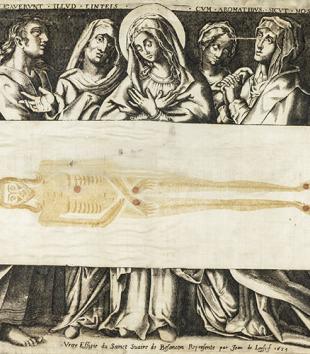The popularity of the poet Rumi in the United States descends from a long history of translations of Sufi poetry as a tradition outside of Islam. Non-Muslim translations of Muslim poetry coincided with non-Muslim engagement with a wider spectrum of Islamic literature and texts, such as the Qur’an.1 Studies such as Mehdi Aminrazavi’s edited volume Sufism and American Literary Masters (2014) and Jeffrey Einboden’s Islam and Romanticism: Muslim Currents from Goethe to Emerson (2014) capture the Western poetic trajectories of Sufi poets, particularly of Jalaluddin Rumi (d. 1273) of Konya, Turkey, and the poet Shams-ud Din Muhammad Hafiz (d. circa. 1389) from Shiraz, Iran. In the eighteenth century, Orientalist scholar and lawyer Sir William Jones (d. 1794) encountered Hafiz’s poetry during his time stationed in British colonial India and slowly began to translate small portions. Other European Romantics, such as the German writer Johann Wolfgang von Goethe (d. 1832), who was influenced by Hafiz’s poetry, initiated further cross-cultural exchanges and translations.2 Versions of these early translations would eventually travel to America via the European Romantics and reach the Transcendentalists, in particular Ralph Waldo Emerson (d. 1882). Thus even before teachers such as Hazrat Inayat Khan (d. 1927) and Muhammad Raheem Bawa Muhaiyaddeen (d. 1986) themselves journeyed to America to spread Sufism, spiritually curious nineteenth- and twentieth-century Americans had already embraced Sufi poetry. It is this legacy that is so crucial to understanding the popularization of Rumi today.
Coleman Barks, a poet and former literature professor at the University of Georgia, and Robert Bly, an American poet, author, and activist, both produced American translations and renditions of Rumi. Coleman Barks’s is particularly significant, as he was also a disciple of Bawa Muhaiyaddeen.3 It was through the Bawa Muhaiyaddeen Fellowship community that Barks met Michael Green, a senior member of the Bawa Muhaiyaddeen Fellowship and artist who would collaborate with Barks to produce sacred “illuminations” for the 1997 The Illuminated Rumi. It is here that one finds the crossroads of the dynamics of Sufism in the United States.
In his illuminations, Green employs classical Islamic geometric patterns, floral repetitions, and religious symbolism, while also superimposing images and graphics of modern Hindu and Buddhist gurus, Christian saints, and figures from Asian and Persian miniatures. One of the central messages repeated in Green’s works is the principle teaching that he attributes to his shaykh (teacher) Bawa Muhaiyaddeen: “The ‘I’ is an illusion, God alone is real.” In The Illuminated Rumi the image accompanying this message represents a confluence of several artistic motifs (Fig. 1). The circle that surrounds the images has varying metaphysical significances for many mystical traditions, including Sufism, in which it reflects the infinite nature of the divine (having no beginning and no end). The background of the circle consists of a symmetrical floral pattern that maintains balance and repetition and only seems to end because of lack of space, indicating an arbitrary limit. The focus of God is contained in the centre of the eight-pointed star (rub al-hizb), which in Islam is symbolic of the seal of the prophet as well as the breath of the merciful God. The star contains the name Allah, which is repeated in an English block calligraphic pattern meant to evoke Arabic calligraphy.4
- 1See Ziad Elmarsafy, The Enlightenment Qur'an: The Politics of Translation and the Construction of Islam (Oneworld Publications, 2009).
- 2See Jeffrey Einboden, Islam and Romanticism: Muslim Currents from Goethe to Emerson (Oneworld Publications, 2014).
- 3or more on Coleman Barks’ experience with Bawa Muhaiyaddeen, see the documentary Rumi: Poet of the Heart (2004) directed by Haydn Reiss.
- 4or more on Sufi aesthetics and art, see Laleh Bakhtiar’s Sufi: Expressions of the Mystic Quest (Art and Imagination) (Thames & Hudson; Reissue edition 2004).
Green’s Rumi-influenced illuminations extend beyond books. They can also be seen in his Green Barn studio, or what he likes to refer to as his “ashram” (Fig. 2). This space continues the theme of Rumi and his message of love while combining English and Arabic calligraphy with the added flavor of Pennsylvania barn culture. It has transformed the scale of Green’s Sufi-inspired works into installations of varying sizes. He also uses the studio as a performance space. Green reworks impressions and motifs drawn from his immediate landscape in Pennsylvania: the rolling hills, the remnants of old barn doors and pieces, which he reworks. Green also explores and transforms Native American traditions with modern symbols, as in drums embedded with broken glass or a large canoe that hangs from the ashram ceiling, rims taken from car wheels attached to its sides. Green engages with Native American spirituality because it is the indigenous tradition of the land he occupies, but he also infuses Native American pieces with modern equipment (i.e., glass, metal), envisioning them as artifacts that will be found by future generations on this land.
Green’s installations and illuminations suggest the extent to which Rumi has traveled over the centuries into the United States and the degree to which understandings of his work and impact continue to change alongside other American spiritualties and religious traditions (Fig. 3). The Bawa Muhaiyaddeen mazar (shrine) in Pennsylvania provides a glimpse into one facet of American Sufism that includes United States citizens and new immigrant pilgrims among its adherents and converts. The influence of Rumi in popular culture, as in Green’s illuminations, reveals the role material culture has played in the introduction of non-Christian forms of spirituality into the United States.
Notes
Keywords
Imprint
10.22332/con.obj.2016.4
1. M. Shobhana Xavier, "From Illuminated Rumi to the Green Barn: The Art of Sufism in America," Object Narrative, in Conversations: An Online Journal of the Center for the Study of Material and Visual Cultures of Religion (2016), doi:10.22332/con.obj.2016.4
Xavier, M. Shobhana. "From Illuminated Rumi to the Green Barn: The Art of Sufism in America." Object Narrative. In Conversations: An Online Journal of the Center for the Study of Material and Visual Cultures of Religion (2016). doi:10.22332/con.obj.2016.4





